Recent Articles
Popular Makes
Body Types
10 Least Expensive Cars With Adaptive Cruise Control With Auto-Stop
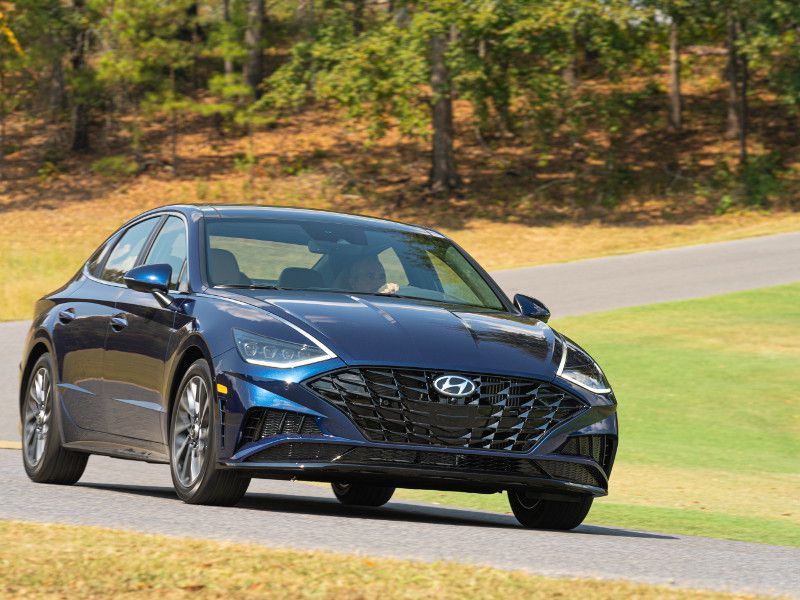
2020 Hyundai Sonata driving ・ Photo by Hyundai
Sometimes knowing when to stop is much more important than knowing how to go. Today, one of the most significant advances in driver-assistance technology is adaptive cruise control that offers automatic stop and/or automatic stop-and-go functionality.
In contrast to adaptive cruise control systems that don’t function at low speeds, the more sophisticated systems can take your car to a complete stop automatically when needed. With the additional “go” functionality, they will also accelerate from a stop on their own when traffic indicates that is safe. A boon for bumper-to-bumper driving, adaptive cruise control with an auto-stop function will make such driving much less demanding and tedious.
2020 Honda Fit
Unlike many higher-priced Honda models, the subcompact 2020 Honda Fit does not offer the comprehensive Honda Sensing safety and driver-assistance suite of technologies on all of its trim levels, but it does provide it as standard equipment on the EX and EX-L trims.
Included in the suite is adaptive cruise control with low-speed follow that helps the car maintain a set following interval on the highway. It will also bring the car to a complete stop if traffic requires that. All versions of the Fit have a 130-horsepower 1.5-liter direct-injected four-cylinder engine. In addition to Honda Sensing, the Fit EX features a standard automatic transmission, while the Fit EX-L adds leather upholstery.
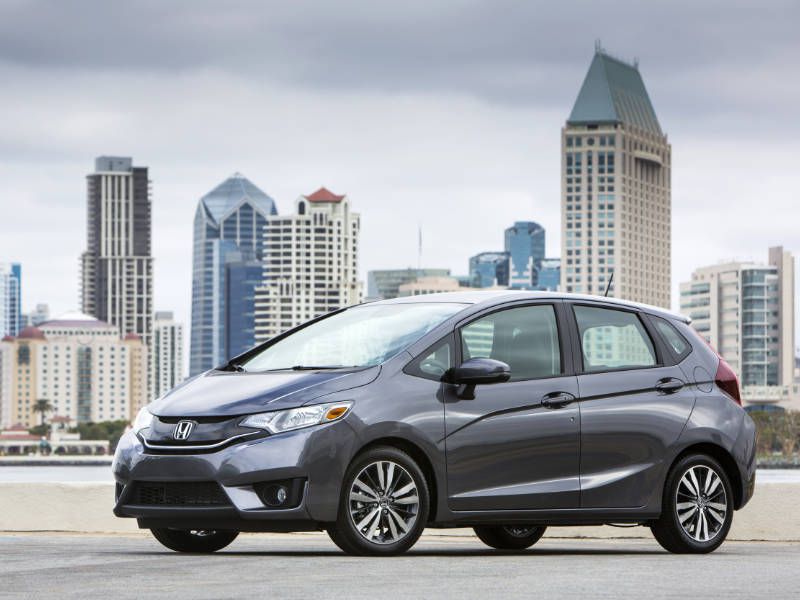
Photo by Honda
2020 Toyota Corolla
The Toyota Corolla compact car with the continuously variable transmission features Full-Speed Range Dynamic Radar Cruise Control (DRCC). It is designed to operate at speeds between zero and 110 mph. DRCC is widely available on Toyota cars and some crossovers, and in many instances, it is intended for highway use.
To enable the car to maintain a preset speed, DRCC uses vehicle-to-vehicle distance control that automatically adjusts vehicle speed to help maintain a preset distance from vehicles ahead. The system uses a front-grille-mounted radar and an in-vehicle camera designed to detect vehicles and calculate their distance from the car. If a driver in front of you is traveling slower than you are, DRCC will automatically slow your vehicle down. And when the slower vehicle speeds up or pulls out of your lane, DRCC will then accelerate back to the preset speed.
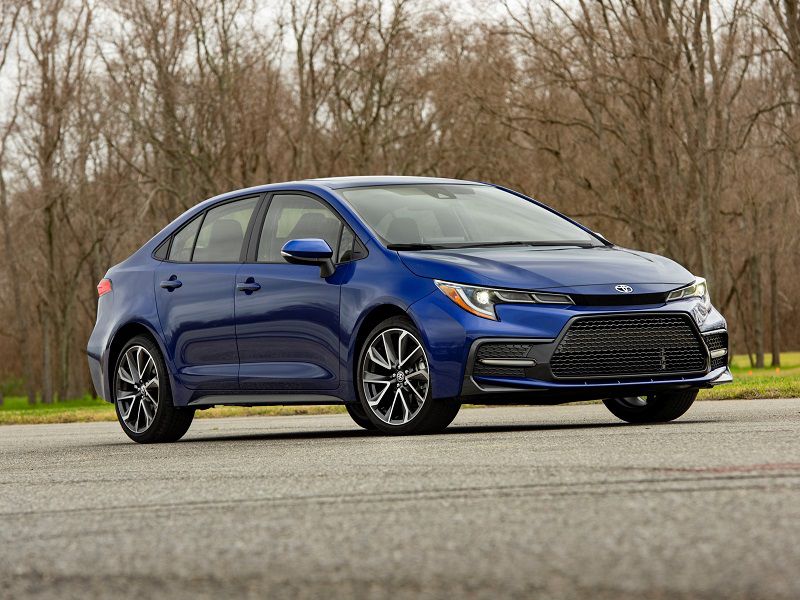
Photo by Toyota
2020 Nissan Sentra
Newly redesigned this year, the 2020 Nissan Sentra compact sedan offers standard Nissan Safety Shield 360, an impressive array of safety and driver-assistance technology. Additionally, Nissan’s Intelligent Cruise Control (ICC), its version of adaptive cruise control, is standard on the mid-level SV and the top-level SR trims.
In operation, when ICC detects a preceding vehicle driving in the same lane, the system controls acceleration and deceleration in order to maintain the preset distance between vehicles according to the vehicle's speed, up to the preset speed and ICC speed range selected by the driver. If the preceding vehicle comes to a stop, the Sentra will come to a standstill within the limitations of the system and the adaptive cruise control system will cancel its automatic operation. In situations when the system may not be able to fully decelerate the vehicle due to the preceding vehicle rapidly decelerating, the ICC system will warn the driver with a warning chime and display alert.
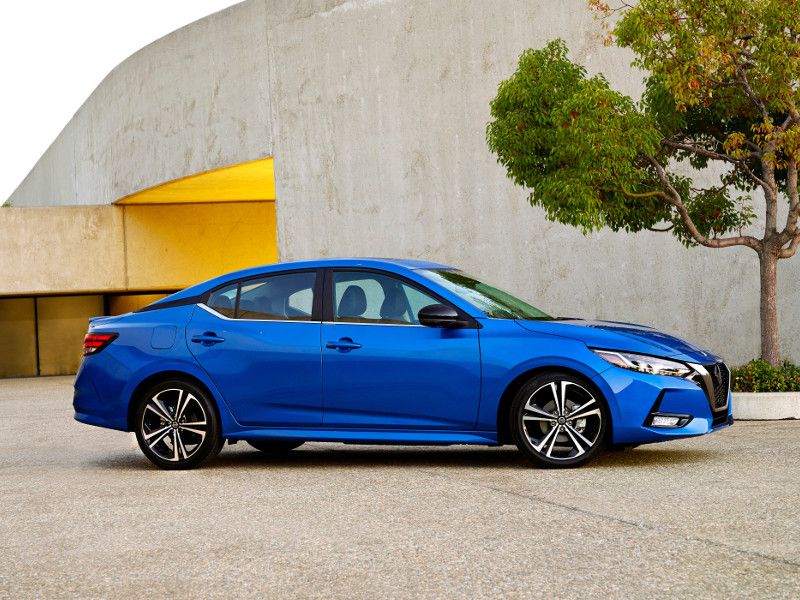
Photo by Nissan
2020 Nissan Versa
The subcompact 2020 Nissan Versa, a size smaller than the Sentra, also offers adaptive cruise control with an automatic stop function. However, the technology is only available as an option on the Versa's top SR trim.
Like several other Nissan vehicles, Versa can be equipped with Intelligent Cruise Control, allowing it to maintain the interval between it and vehicles ahead of it in its lane. The new Versa also offers optional Nissan Safety Shield 360 that provides front, side, and rear safety monitoring. The system includes automatic emergency braking with pedestrian detection, rear automatic braking, a lane-departure warning, automatic high beams, blind-spot monitoring, and a rear cross-traffic alert. A standalone system called Intelligent Driver Alertness monitors the driver’s fitness for the task.
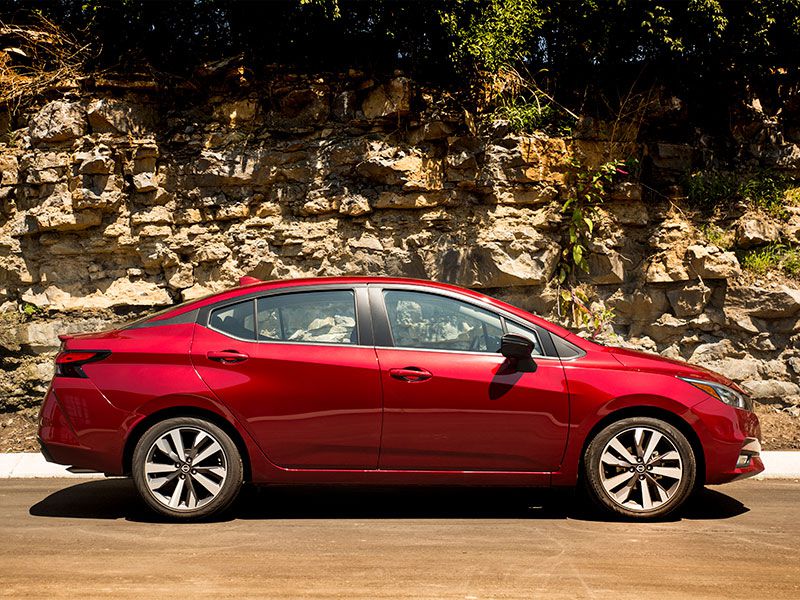
Photo by Nissan
2020 Honda Civic
The 2020 Honda Civic compact car offers the Honda Sensing technology suite on all trim levels. This delivers the benefits of a number of advanced driver-assistance systems, including adaptive cruise control.
The Civic, like several other Hondas, has adaptive cruise control with low-speed follow. The system helps the car maintain a pre-determined interval on the highway, so it is unnecessary for you to change vehicle speed as you encounter slower-moving traffic ahead. With the low-speed-follow function, the adaptive cruise control will bring the Civic to a complete stop if traffic requires it. Once stopped, to initiate acceleration the driver needs to press on the accelerator or engage the ACC button. The car will then accelerate back to the pre-determined speed when traffic allows.
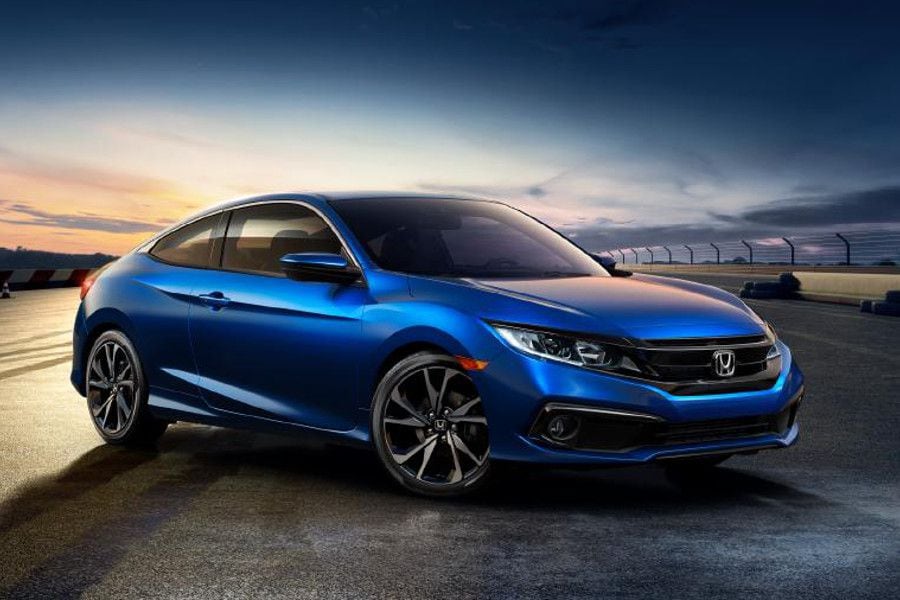
Photo by Honda
2020 Mazda Mazda3
Available a four-door sedan or hatchback, the 2020 Mazda3 is fitted with a 186-horsepower Skyactiv-G 2.5-liter four-cylinder engine that enhances its fun-to-drive nature. Prominent on the list of standard features is the sophisticated radar cruise control with stop-and-go capabilities. That feature plus its near-luxury interior makes the Mazda3 an ideal commuter car.
On the safety front, the Mazda3's standard features include a driver attention alert, smart brake support, a lane-departure warning with lane-keep assist, and automatic high beams. Automatic on/off headlights, rain-sensing windshield wipers, and Mazda's G-Vectoring Control Plus are also standard.
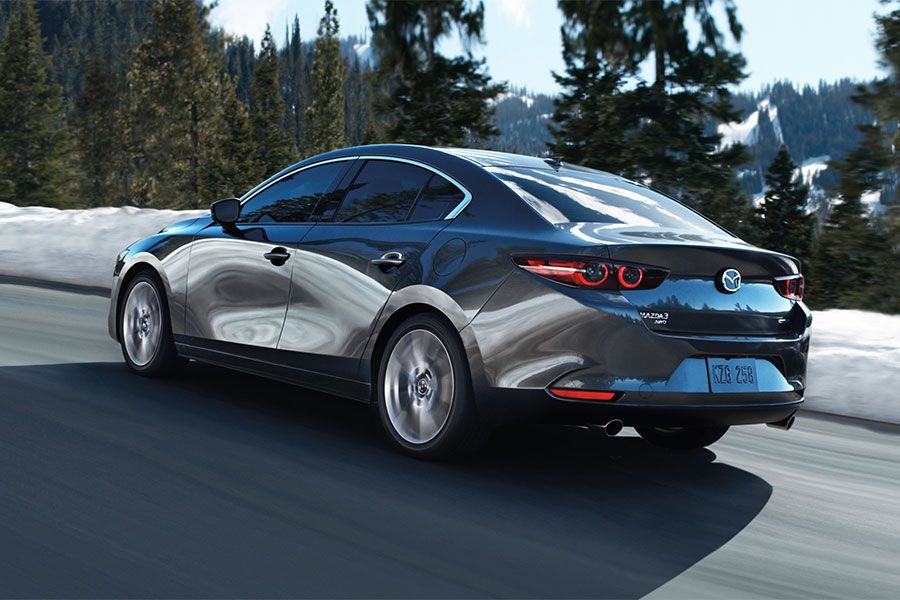
Photo by Mazda
2020 Subaru Legacy
The 2020 Subaru Legacy mid-size sedan differentiates itself from its competitors with standard all-wheel drive. The brand has become world-renowned for its multi-camera-based EyeSight Driver Assist Technology that now includes a lane-centering function.
In combination with EyeSight’s advanced adaptive cruise control, the Legacy's lane-centering system provides steering assist when it senses the vehicle might veer outside its lane. The result: The driver finds it easier to maintain a direct path. Additionally, the model’s DriverFocus distraction-mitigation system — which is optional on the Limited and standard on XT trims — uses a camera and facial recognition software to identify telltale signs of driver fatigue or driver distraction.
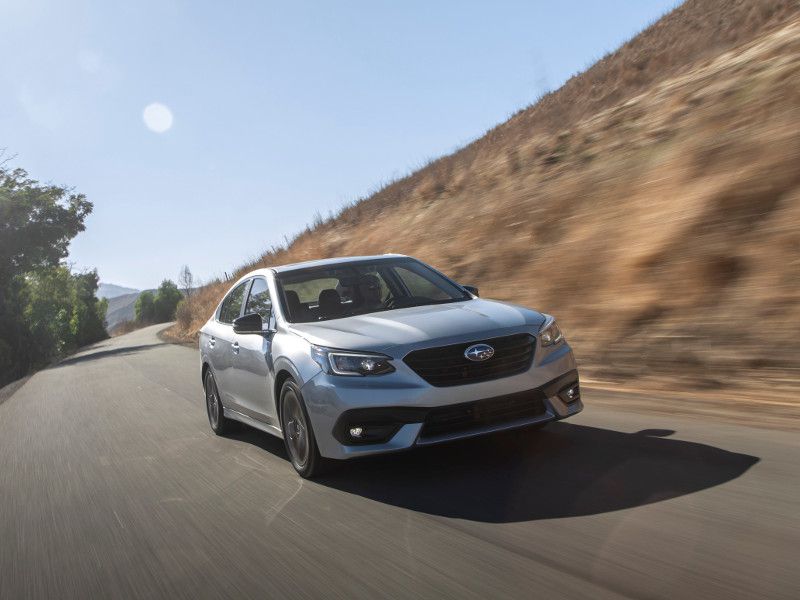
Photo by Subaru
2020 Hyundai Sonata
The newly redesigned 2020 Hyundai Sonata mid-size sedan crams a lot of driver-assistance technology into its supple body. For example, Hyundai’s SmartSense advanced driver assistance system uses three radar sensors, 12 ultrasonic sensors, and five cameras to guide and issue warnings to the driver, and it takes over some driving functions when necessary.
The Sonata also features Advanced Smart Cruise Control, which is a full stop-and-go system, as standard equipment. In congested traffic conditions, the system will bring the car to a full stop if traffic conditions require and will automatically resume forward progress when the coast is clear. Lane Following Assist, also standard, automatically adjusts steering to help keep the sedan centered in its lane.
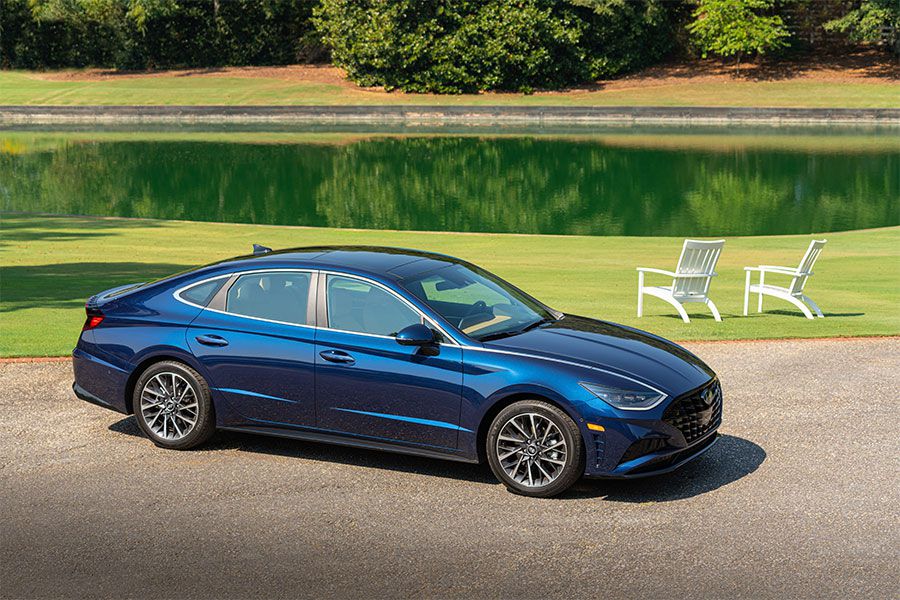
Photo by Hyundai
2020 Honda Insight
The Honda Insight compact hybrid sedan will capture many buyers with its remarkable fuel economy (55 mpg in city driving). But the Honda Sensing suite of driver-assistance and safety technology, standard on all trims, will also win it fans.
Honda Sensing includes adaptive cruise control with low-speed follow, as in several other Honda vehicles. With it, the car can maintain a following-interval on the highway, changing speeds as it encounters traffic. The low-speed-follow function will bring the Insight to a complete stop if required to avoid a collision. The car will remain stationary until the driver presses on the accelerator or hits the ACC button. The Insight will then accelerate back to the pre-determined speed while maintaining its interval with the vehicle ahead.
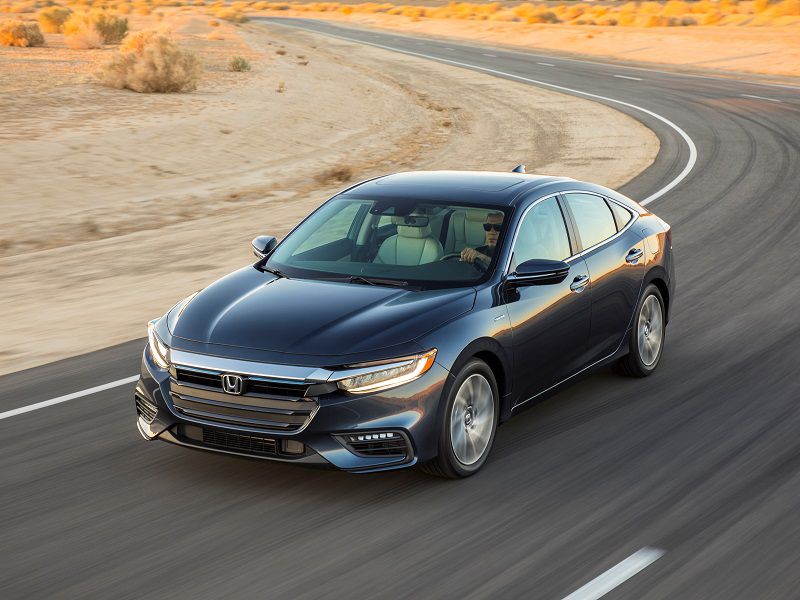
Photo by Honda
2020 Mazda Mazda6
The 2020 Mazda6 mid-size sedan has an attractive exterior shell with Mazda’s Kodo design theme. Under the skin, its collection of driver-assist technology is among the most comprehensive in its segment.
Mazda calls the technologies i-ACTIVSENSE, and the array includes radar cruise control with a stop-and-go function. In normal traffic conditions, the Mazda6 will maintain its interval, and it can bring itself to a complete stop when traffic requires. It will also accelerate to resume speed without driver intervention. The i-ACTIVSENSE suite additionally includes blind-spot monitoring with a rear cross-traffic alert, automatic emergency braking with pedestrian detection, a lane-departure warning with lane-keep assist, Smart Brake Support, and automatic high beams.
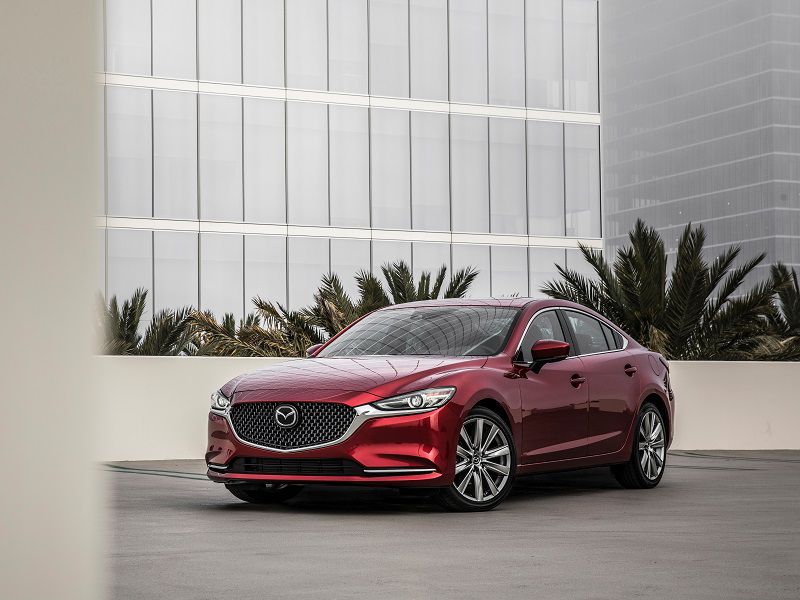
Photo by Mazda